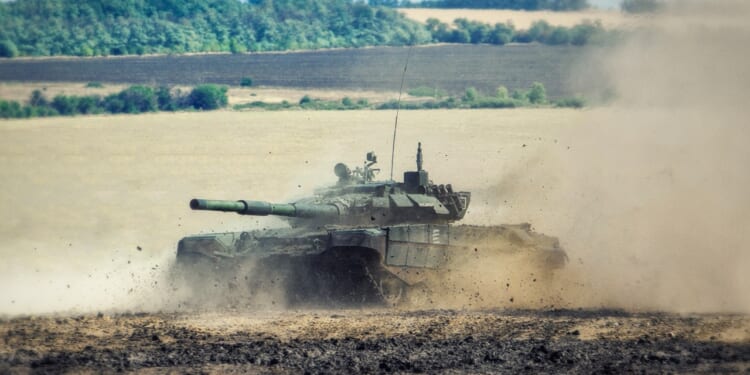Russia has long since exhausted its supply of modern main battle tanks—and is quickly running out of antiquated reserves, too.
At the end of the Cold War in 1991, the Soviet Union was the largest operator of tanks in the world, with a fleet of approximately 64,000 modern and semi-modern tanks. Although a significant number of these were in storage, it was still seen as a sizable force that the Soviet Army could call on in the event of a war against NATO.
Following the dissolution of the Soviet Union, Russia inherited most of its tanks. However, by 2020, those numbers had decreased to approximately 12,000 vehicles. This number was still nearly double the fleet of the US military’s tank fleet, and it included sizable numbers of T-72, T-80, and T-90 main battle tanks (MBTs), which were seen as highly capable and effective machines. These were further bolstered by deep reserves of more than 7,300 tanks from the Cold War that could be called into action if needed.
Then Russia launched its war in Ukraine, and its fortunes changed.
Since February 2022, the Kremlin has taken massive armored losses. Like so much else associated with the Ukraine conflict, this was likely unexpected; recall that Russian forces entered Ukraine wearing dress uniforms for a parade, instead of cold-weather gear, and seem to have been astonished when the Ukrainians began firing back. Three years of war later, Moscow has drawn on its tank reserves so significantly that there are now reports that the stockpiles are nearly depleted. Though the Kremlin insists that it has no problems with tank replacements, it is noteworthy that in 2022, Russia’s tank reserves were stored at 24 bases throughout the country, and only nine such facilities operate today.
Russia’s Armored Corps Is Running on Empty
With the war in Ukraine likely to extend at least well into 2026 as peace talks have made virtually no progress, it is unclear how much more attrition Russia can take. Recent open-source intelligence suggested that Russia has only 2,887 tanks in storage today, and more than half of these are in poor condition. Less than one-quarter could be classified as being “usable” on the battlefield. Fewer than 100 were the relatively modern T-80 MBTs, with the remainder including antiquated T-62, T-64, and early model T-72 tanks.
The situation could be even worse. Russia has already pulled more than 4,400 of its older tanks from storage, but this has done little to bring about a quick or resounding victory. In some cases, those machines have been moved from storage to depot yards to the front lines and then destroyed, captured, or abandoned. The time, energy, and money spent restoring the tanks to service hardly seems to have been worth it.
Repeatedly, the Russian Army has massed its tanks for an assault that it hoped would break through the lines and bring an elusive final victory. Each time, so far, this effort has failed—yet another way in which the ongoing conflict tragically mirrors many aspects of World War I, where vast quantities of men and materiel were squandered on both sides with little to show for it. Ukraine’s troops have their fair share of blunders throughout the ongoing war, too, but it is the Kremlin that keeps repeating its mistakes, even after nearly four years of war.
Russia Is Replacing New Tanks with Old Ones
The issue is compounded by the fact that, as David Axe wrote this week, Russia’s tank production is also “collapsing”—meaning it will be that much harder for the Russian Army to replace current battlefield losses. This is a situation that could continue even after the war is eventually resolved.
That may result in the Kremlin continuing to refurbish tanks that other countries would have sent to the scrapyard. Repairing an old tank, even one in poor condition, can be easier and less time-consuming than building a new one. That may not be as economical, however—which may be the final consideration for why even those 4,000 tanks in poor condition haven’t been sent to the front lines, at least not yet.
However, given the state of Russia’s military, it may be a matter of when, not if, even the oldest of the tanks rolls back into action. If there is any way of making them run, chances are good that they are already being considered for action.
About the Author: Peter Suciu
Peter Suciu has contributed over 3,200 published pieces to more than four dozen magazines and websites over a 30-year career in journalism. He regularly writes about military hardware, firearms history, cybersecurity, politics, and international affairs. Peter is also a contributing writer for Forbes and Clearance Jobs. He is based in Michigan. You can follow him on Twitter: @PeterSuciu. You can email the author: [email protected].
Image: Shutterstock / RoProy.


















